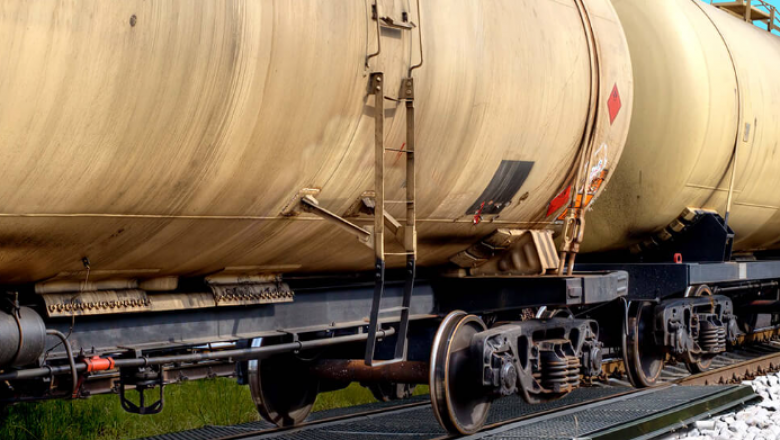views
The railcar spill containment market has seen significant developments in recent years, driven by increased environmental awareness, regulatory pressures, and technological innovations. Railcars are vital for transporting hazardous materials such as chemicals, oils, and fuels. However, the risk of spills during transportation remains a pressing concern for industries, regulators, and environmentalists alike. As industries evolve, new strategies and technologies are emerging to better prevent, contain, and mitigate the effects of spills, while also addressing growing concerns over sustainability.
Growing Regulatory Pressures
Regulations surrounding spill containment are evolving globally. Governments are tightening laws related to hazardous materials transportation, requiring businesses to adopt more robust and effective containment solutions. This has spurred innovation in the railcar spill containment sector. Laws such as the EPA’s SPCC (Spill Prevention, Control, and Countermeasure) program in the U.S. and similar regulations in Europe and Asia are prompting the development of spill containment systems that go beyond traditional methods.
Compliance with these regulations is driving the adoption of advanced spill containment systems in the rail transport industry. Companies are increasingly investing in technologies that minimize spill risks, thereby reducing potential fines and reputational damage from environmental incidents.
Technological Innovations in Spill Containment
Advancements in materials science, sensor technology, and automation are reshaping the spill containment landscape. One of the most prominent innovations is the use of advanced composite materials, which are lightweight yet durable and resistant to corrosion. These materials are particularly useful in manufacturing railcar liners and containment barriers, ensuring they can withstand harsh conditions and hazardous cargo.
Smart sensors and automated monitoring systems are also gaining traction. These sensors can detect leaks or unusual pressure levels in real-time, alerting operators to potential problems before they escalate. This proactive approach minimizes response time and enhances the overall safety of railcar operations. Additionally, automation has led to improvements in spill detection and containment deployment, enabling quicker response times and minimizing environmental damage.
Robotics and drones are also emerging technologies in this space. Drones can be used to inspect railcars for damage or signs of leaks in hard-to-reach areas, while robots can perform tasks like cleaning up small spills or maintaining spill containment systems, reducing the need for human intervention in hazardous environments.
Sustainable and Eco-Friendly Solutions
Sustainability is becoming a key driver for the railcar spill containment market. In line with global efforts to reduce carbon footprints and minimize environmental impact, companies are increasingly focusing on eco-friendly containment materials and systems. Innovations such as biodegradable or recyclable containment products are gaining popularity, aligning with the growing emphasis on sustainability across industries.
Moreover, the adoption of renewable energy sources in spill containment systems is gaining traction. Solar-powered pumps and automated cleaning systems are examples of how companies are integrating renewable energy into spill management solutions. This reduces reliance on conventional energy sources and supports the broader goals of sustainability.
Challenges and Opportunities
Despite these advancements, the railcar spill containment market faces several challenges. One of the primary concerns is the high cost of implementing cutting-edge containment systems. While technological innovations offer long-term savings and environmental benefits, the upfront investment required for research, development, and deployment can be substantial for some companies.
Furthermore, the complex and variable nature of hazardous materials makes it challenging to create a one-size-fits-all solution for spill containment. Different materials require different containment methods, and factors such as temperature, pressure, and chemical composition must be taken into account when designing railcar spill containment systems.
However, these challenges also present opportunities. As demand for more efficient, reliable, and environmentally-friendly solutions grows, companies that specialize in railcar spill containment are well-positioned to capture new market share. The continued development of cost-effective technologies and more adaptable containment systems will help address these challenges.
Future Outlook
Looking ahead, the railcar spill containment market is poised for continued growth and innovation. Advances in digital technology, such as the use of AI and machine learning, will further improve predictive maintenance and risk management. As environmental concerns continue to rise and governments introduce stricter regulations, the demand for advanced spill containment solutions will increase.
In conclusion, the railcar spill containment market is undergoing a transformative period, characterized by technological disruptions, regulatory changes, and a growing focus on sustainability. Innovations in materials, automation, and environmental solutions are not only improving containment methods but also shaping the future of the industry. With continued research and development, the sector is poised for a safer and more sustainable future.






















Comments
0 comment